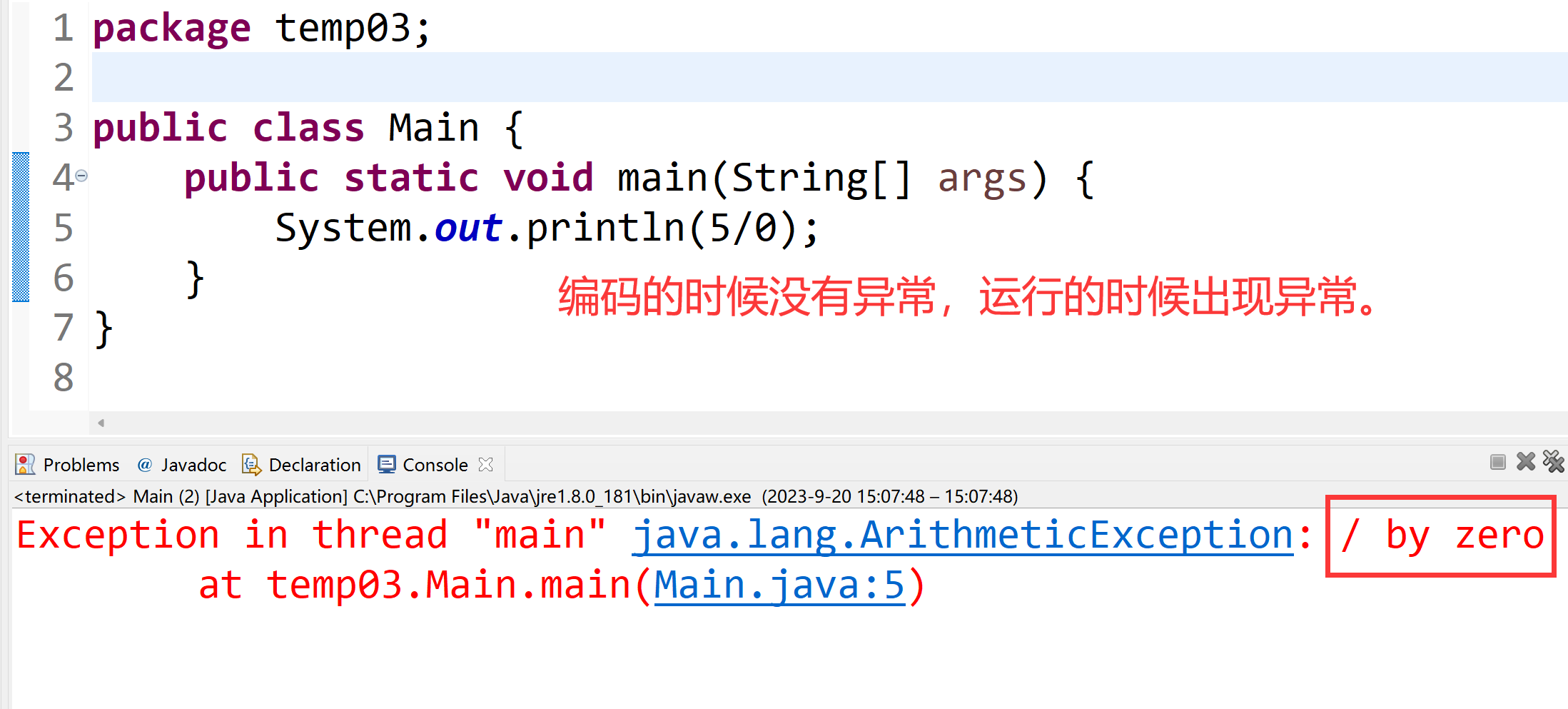topic
It can be ignored when the Java program is compiled, and the exception that may occur during runtime is ( B )
A. Runtime exception
B. Checked exception
C. Error ERROR
D. Compilation exception
The answer to this question is: B, but why is it B? Let’s analyze it in detail:
Checked exception
Checked Exception refers to an exception that needs to be handled at compile time. In Java, all exceptions inherited from the Exception class (except RuntimeException and its subclasses) are checked exceptions. When a method may throw a checked exception, the code calling the method must either catch the exception or continue to throw the exception upward.
Checked exceptions are mainly used to represent some external conditions or errors that may occur during program running, such as file reading errors, network connection errors, etc. By catching and handling these exceptions, the robustness and reliability of the program can be enhanced.
Example:

runtime exception
Runtime exceptions refer to abnormal situations that occur during the running of a program. They are usually caused by code defects or conditions that do not meet expected expectations. Unlike compile-time exceptions, run-time exceptions do not need to be explicitly handled or declared in the code. Common runtime exceptions include NullPointerException, array index out-of-bounds exception (ArrayIndexOutOfBoundsException), etc.

ErrorERROR
An error is an error in the coding process. For example: parameter passing, data out of bounds, code errors, etc.

At this point, everyone should basically be able to solve this problem. hope that it can help us.
abnormal
Exceptions are errors or unusual conditions that occur during program execution. Exceptions are thrown when a program encounters an error or unexpected condition that it cannot handle. Exceptions can be syntax errors, logic errors, or runtime errors. By catching and handling these exceptions, programs can better respond to error conditions, improving robustness and reliability.
How to handle exceptions in java code
In Java, you can use try-catch statement blocks to handle exceptions. The try block contains code that may throw an exception, while the catch block is used to catch and handle exceptions.
The following is the basic syntax structure for handling exceptions:
try {
// 可能会引发异常的代码
} catch (ExceptionType1 exception1) {
// 处理ExceptionType1类型的异常
} catch (ExceptionType2 exception2) {
// 处理ExceptionType2类型的异常
} finally {
// 可选的finally块,无论是否引发异常,都会执行其中的代码
}When the code in the try block throws an exception, the program immediately jumps to the catch block that matches the exception type and executes the code defined in the catch block. If there is no matching catch block, the exception will be passed to the caller for handling.
You can use multiple catch blocks as needed to handle different types of exceptions. You can also add a finally block at the end to execute code that must be executed regardless of whether an exception is thrown, such as resource release operations.
Here's an example:
try {
// 可能会引发异常的代码
int result = divide(10, 0);
System.out.println("计算结果:" + result);
} catch (ArithmeticException e) {
// 处理除以零的异常
System.out.println("除数不能为零!");
} finally {
// 无论是否引发异常,都会执行这里的代码
System.out.println("程序结束");
}
// 自定义一个除法方法
public static int divide(int num1, int num2) {
return num1 / num2;
}How to use throws keyword in java to throw exception in method declaration?
Using the throws keyword in a method declaration can throw an exception during method execution and pass the exception to the upper-layer method that calls the method for processing. The syntax for using the throws keyword is as follows:
修饰符 返回类型 方法名(参数列表) throws 异常类型1, 异常类型2, ... {
// 方法体
}In a method declaration, you can specify one or more exception types separated by commas. When a specified exception occurs during method execution, the exception will be thrown and passed to the caller. readFile
For example, the following method declaration uses the throws keyword to throw an IOException:
public void readFile(String filePath) throws IOException {
// 读取文件的代码
}When calling the readFile method, the caller must either handle the exception or continue to pass it to the upper method.
Can the `throws` keyword throw multiple exceptions?
throwsKeyword can throw multiple exceptions. In a method declaration, you can use commas to separate multiple exception types to indicate that the method may throw these exceptions. When calling methods that may throw these exceptions, you must use try-catch blocks or continue to throw these exceptions upwards.